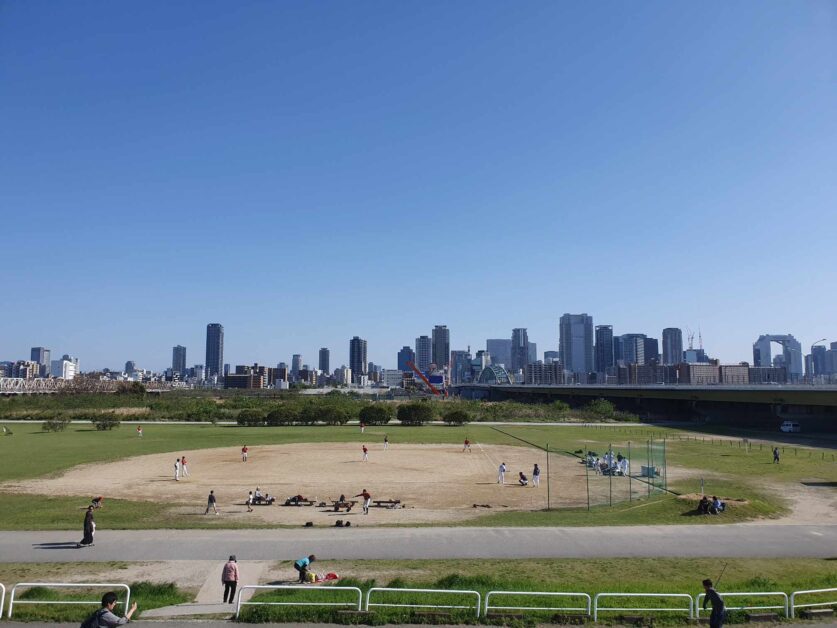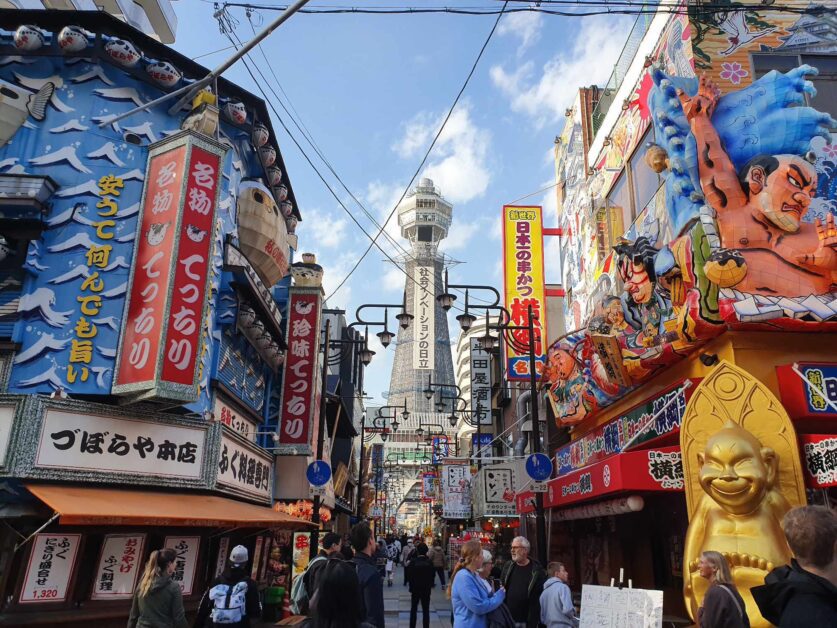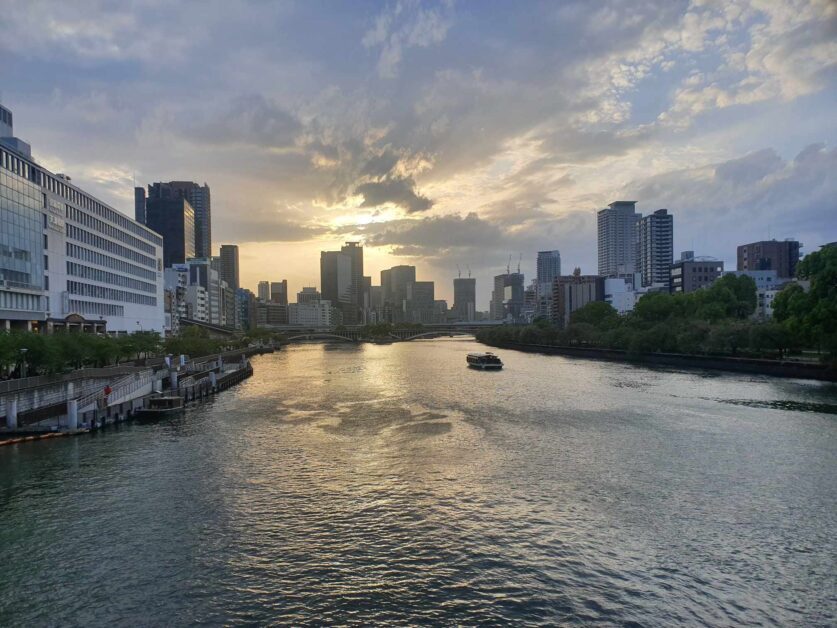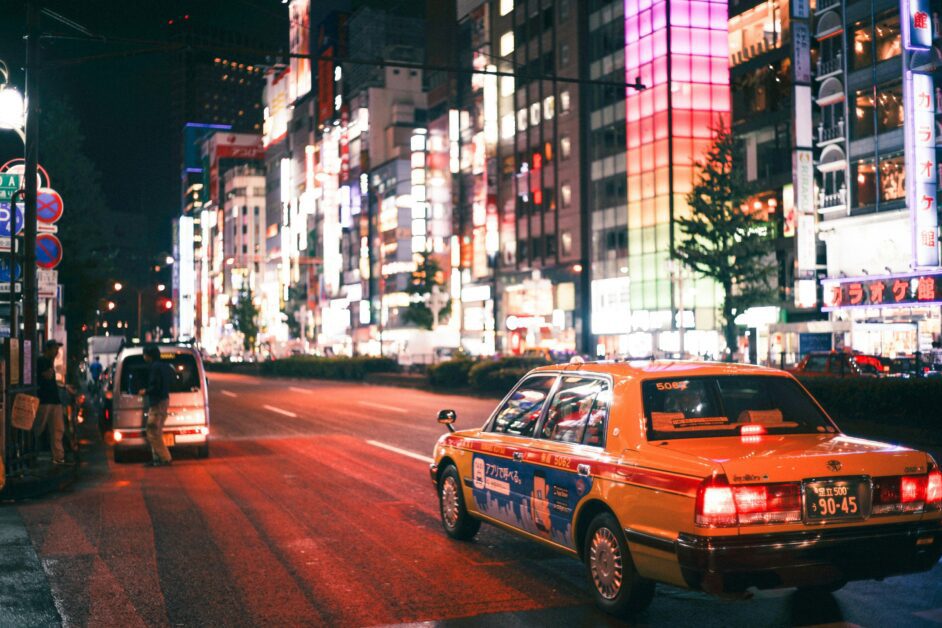Is There Uber in Japan? What You Need to Know About Ride-Sharing in Japan [2024]
Japan is a country of unparalleled convenience and affordability when it comes to travel. During my three months living in Japan, I can’t say there was a single moment when I panicked about trying to make my way across the city (I was based in Osaka) or travel from one city to another.
You’ll find bullet trains that can get you from one side of the country to the other in less than 12 hours (ex. You can do the 1600 km journey from Osaka to Sapporo in half a day), reliable and prompt city buses and shuttles that cover most major attractions and neighborhoods, local subway lines that weave through cities and towns that make my home state in the U.S. look like it’s living in the 1700s, and everything in between. In Japan, you’d be hard-pressed to find yourself without transportation options.
However, it’s always important to have a fallback, in case all else fails or public transportation is closed. Or if you have more luggage than is feasibly possible to transport without having a nervous breakdown. In most countries, I keep Uber in my back pocket as a failsafe. But it’s only available in just over 70 countries. What about Japan? Is there Uber in Japan? What about other ride-hailing apps?
Yes, there is Uber in Japan and it is generally an effective method of transportation. However, there are regulatory limits to Uber and its existence in Japan. Furthermore, it’s considerably more expensive than public transportation, and in my humble opinion, only worth using in a select few situations – as Japan’s public transportation network is one of the most affordable and efficient in the world.
Below, I’ll walk you through more about using Uber in Japan, its legality, situations I recommend and don’t recommend using Uber in Japan, and the most frequently asked questions about using this ride-sharing app and service with 130 million-plus global users.
Is There Uber in Japan?

Yes, there is Uber in Japan. The app works with no problem in the country, so if you’re traveling or moving to Japan and worried about being geo-blocked from using it, don’t worry.
However, while Uber does exist in Japan, its 2018 entry into the Japanese transportation market came with regulatory strings attached and it may not exist in the form that you’re accustomed to in your country.
Japan’s transportation regulatory landscape requires that all Ubers operate as licensed and regulated taxis, meaning that when you ‘Book an Uber’ in Japan, you’re actually hailing a traditional Japanese taxi. Simply put, Uber is an interface and platform that allows riders to hail and/or book traditional Japanese taxis.
This is different to Uber in the U.S. and Canada where you hail a private ride from individuals who are only required to possess a valid driver’s license and a personal vehicle (after a vetting process, of course).
Think of Uber in Japan as a “concierge service” that assists riders in finding a regulated and licensed taxi driver to pick them up and take them from Point A to Point B. It’s a concierge service in the way that the app acts as a “middleman” that connects riders with a professional service that abides by all Japanese transportation regulations and standards.
In the U.S. and Canada, Uber is more akin to directly booking a hotel room rather than through a platform like Airbnb. For example, you’re connected directly with the hotel room (aka the personal driver and car) that you want to book and settle payment and/or requests one-on-one.
Japan’s Evolving Ride-Hailing Landscape
Like many countries, the Japanese taxi industry has strongly opposed Uber’s foray into the market, citing the undercutting of fares and taking away jobs from local, licensed and professional drivers. Further, taxi industry lobbyists emphasize how the safety of passengers can’t be guaranteed with ride-hailing apps like Uber.
Due to a 2023 country-wide taxi driver shortage and surge in post-pandemic inbound tourism, the Japanese government is in the midst of overhauling and easing its restrictions on Uber and ride-sharing apps in the country. Beginning in April 2024, Uber and other “nonprofessional drivers” will be allowed to operate in designated areas and at specific times.
However, this is primarily intended to take place in areas taxis don’t explicitly or comprehensively serve – such as in more rural and countryside locations.
Further, Ubers must still operate under the guidance of regulated Japanese taxi companies and there will be no dynamic pricing – all fares will be set at a fixed rate that is dictated by Japanese transportation regulatory authorities.
What Are Uber’s Limitations in Japan?
As mentioned above, the major limitation of Uber in Japan is that the app only allows users to connect and hail rides from licensed and regulated taxis – those with a Class-2 driver’s license (which allows the legal transportation of passengers).
This means that the robust catalog of vehicles that Uber offers in your home country may not be available in Japan, such as UberXL. However, in April 2024, Tesla Model Ys will join Japan’s taxi fleet and will be available as a “hired taxi service.”
Is Uber Eats in Japan?
While Uber’s ride-hailing service is tightly regulated and relegated to licensed taxis in Japan, Uber Eats functions similarly to the U.S. and Canada.
Having launched in Japan in 2016, Uber Eats has since rapidly achieved nationwide popularity and the top spot amongst food delivery apps – with an estimated 25 million-plus downloads as of September 2022. That’s roughly 1/5th of the total population of Japan.
One thing that actually caught me off guard when I was staying in Tokyo for several weeks was the number of Uber Eats riders on bicycles and the number of foreign workers, which I later learned was only for those who held a permanent resident card, special permanent resident card, or holiday working status.
Pale Ale Travel Tip: If you’re traveling to Osaka and looking to make the most of your gastronomic experience, make sure to check out my post breaking down 21 of my favorite ramen restaurants in Osaka.
Is Uber Cheaper Than a Taxi in Japan?
No. Uber is more expensive than a standard taxi in Japan. This is because Uber connects you to an already existing taxi and then tacks on an additional app surcharge and/or fee. The same, initial taxi fee and per-kilometer rates are charged for both standard taxis and Ubers (since they are both taxis), you’re just paying an extra fee on top of this.
Japanese taxis, on average, are already quite costly, boasting the second-highest taxi fares across the globe due to their tight regulation, premium features, high maintenance costs, lack of availability and market competition, and fixed cost for taxi drivers to obtain a Class-2 driver’s license.
My question for you is, why make things more expensive than they need to be?
If you need to book a taxi in Japan, either ask your hotel concierge or front desk staff to help you arrange a taxi or simply hail one on the street.
How Much is Uber in Japan?
Uber charges the exact initial fees and per kilometer rates/pricing as standard Japanese taxis, which is 500 yen (base fee) for the first 1.1 kilometers and roughly 440 yen per kilometer thereafter.
Remember, there is an additional app surcharge associated with using Uber which is tacked onto this, which makes Uber in Japan more expensive than just using a normal taxi. This is interesting considering you are receiving the same service and riding in the same car.
Situations I Recommend Using Uber Over a Taxi or Public Transport in Japan

My default rule is always to opt for public transportation or hail a taxi yourself (or ask your hotel) if you need to get somewhere. However, there are some exceptions and situations in which I would consider using Uber over a taxi or public transport in Japan.
As a Failsafe in Case Everything Goes Wrong (or is Closed)
Uber is my failsafe. When traveling, no matter how convenient or affordable a country is, I just expect that something is going to go wrong at some point. That’s why I recommend having it installed as a backup in case you’re unable to directly hail any taxis or public transport is closed for the night.
As I was departing Osaka to head back to Hong Kong, there was a downpour so intense that the Airport Express line was temporarily suspended. This happened right as I showed up at Tennoji Station with all my luggage. I was shuffled to a station several stops down to take the Nankai Airport Line to Kansai International Airport, which had me a bit frazzled (especially with a long day of travel ahead).
At that moment, I wish I had just called an Uber to get to the airport. That’s not because the airport line wasn’t efficient but rather it took an extra 45 minutes just to navigate to the proper station, compose myself, speak to transport staff, and figure out exactly how to get to the airport.
I wasn’t even in a time crunch but the uncertainty of everything had me in an even more neurotic state than I typically am.
If You’re Swamped With Luggage
I know that overwhelming feeling of trying to navigate a new city or country with more luggage and bags than you can feasibly carry yourself. If you want to skip trying to cram on public transportation with your bags and be able to spread out and relax, then Uber is a great option for getting to where you need to go.
Personally, I hate having to hoard my luggage on a train and always get way more stressed than I should when it starts to pack up, feeling like I’m committing some cultural faux pas by taking up so much space. So, if I really am not in the mood for reining in all my bags, I’ll take an Uber here and there.
If You’re With a Group of People
Say you land at the airport or are taking a long-distance trip and are with a group of three to four other people, an Uber may be worth splitting the cost as it ultimately doesn’t work out to that much more than it would be to take public transportation.
In Hong Kong (my home), I rarely take Ubers and taxis. But when I do, it’s typically with a group of friends as it’s marginally more than if we were all to use the bus (or minibus) and metro.
Pale Ale Travel Tip: Japan caught me by surprise with just how cash-heavy it is, so I would recommend always carrying cash on hand just in case your card doesn’t work (this applies anywhere you go). For example, most little mom-and-pop shops in Japan are strictly cash! Don’t think just because Tokyo sometimes feels like it’s a city straight out of Blade Runner that everything is in the future as well!
Situations I Wouldn’t Recommend Using Uber in Japan
While hailing and using taxis in a large percentage of countries is usually seen as a gamble, unsafe, and unpredictable form of transportation, this is far from the case in Japan.
A major reason why a lot of us use Uber in the first place is that we don’t typically carry cold hard cash on us (or enough to pay for a taxi ride) so it’s more convenient to pay with an app linked to our credit card. However, this is a relatively obsolete argument due to the fact that Japanese taxis accept both foreign credit cards and cash.
Going to & From the Airport (With One Exception)
In most major cities I’ve traveled to or lived in, I’d consider taking a taxi or Uber a nice little shortcut where I could relax and not have to worry about my luggage on the way to the airport. And, it would typically get me there in half the time it would take on a train or a bus. However, in Japan, that’s not the case at all.
Every major airport in Japan has a connecting rail, shuttle, or bus network that will get you into whatever city or major area you need to go in an efficient manner and at an affordable price. And, it’s typically quicker than a taxi or Uber.
I was conditioned by my year-plus living in Ho Chi Minh City where I’d take a Grab car for USD 12 to and from the airport. However, when I first looked up pricing from Kansai International Airport to Osaka’s city center, I nearly spit out my drink as I was staring down a roughly USD 150 fare.
So, I picked up an ICOCA card (metro card) and a ticket for the Japan Rail (JR) Airport Express Haruka (the one decked out in ‘Hello Kitty’ designs) and made my way into the city for nearly 1/6th that price (roughly USD 20-25). It had me smack dab in the city center within 50 minutes.
Exception to This Rule
As I did most nights in Japan, I drank a lot of beer. However, one night after stumbling back to my hotel at 2 or 3 in the morning, I noticed a distressed couple in the lobby, panicking as they were unable to get a taxi to the airport. The front desk was unable to get a hold of any available taxis and kind of just shrugged and acknowledged that it was looking pretty grim.
I had previously fired up my Uber app to use for a trip where I was helping a friend transport luggage from the south of Osaka up north, so I figured I could be of assistance. In a drunken stupor, I offered to search for available Ubers in the area and found more than a handful circling the hotel.
After much effusive thanks, I sent them on their way in an Uber (I hope they made their flight). I woke up the next morning to a charge of USD 132 and wondered what possessed me. Money doesn’t just grow on trees. But then, I thought back to several kind strangers during my travels who had helped me out in times of distress.
Long story short, my exception to this rule would be that I’d recommend taking an Uber to the airport if you have an early morning flight or need to be at the airport at an ungodly hour.
If Public Transportation is Available
Once again, I would not take an Uber or taxi if public transportation is available. Part of the joy of traveling is experiencing what the locals do.
I spent a combined several weeks in Tokyo and was at first a bit overwhelmed going into it as I had read about Tokyo’s vast metro system. However, after arriving and seeing it for myself, it was like any other metro I’ve used in the world – just thirty times the size.
For the first several times using the Tokyo subway, I’d strategically map out my route and take screenshots on my phone or have Google Maps fired up. It took me a few trips to feel truly comfortable but by the end of it, I felt like I was in the swing of things and in step with the locals.
Get out there and give it a try. Trust me, you’ll get to where you need to be far quicker than you would trying to hail a taxi or Uber and you won’t break the bank. It will take one or two trips to get the hang of things but once you do, you’ll wonder why you spent so much money on a less efficient means of transport.
Frequently Asked Questions About Ride-Hailing Apps in Japan

Below are several frequently asked questions about Uber and ride-hailing apps in Japan.
What is the Japanese Version of Uber?
While Uber and Lyft are typically the ride-hailing apps of choice in the U.S. and Canada (and account for the dominant majority of the ride-hailing app market), Uber is far from the most popular app for getting around in Japan. That award goes to… ’Go’.
‘Go’ has snagged roughly 70% of Japan’s mobility market and is classified as Japan’s ‘Official Travel App’. That main caveat is that ‘Go’ requires a Japanese phone number and supports a Japanese-only interface – which doesn’t make it a feasible option for most tourists visiting Japan (considering you’re likely purchasing a data-only SIM at the airport).
Because of this barrier to use, ‘Go’ may be more suitable for long-term expats or students living in Japan who have a proficiency in Japanese and a local number. Go also allows riders to connect their credit cards to the app in order to avoid exchanging cold hard cash.
Is Grab Available in Japan?
Having lived in Vietnam for over one year, Grab was my ride-hailing app of choice and the favorite amongst riders in Southeast Asia.
As of 2019, the Singapore-based ride-hailing app and service ‘Grab’ is available in Japan. Similar to Uber, Grab partnered with JapanTaxi and operates as an interface for riders looking to connect with designated and licensed taxis.
However, Grab’s geographical coverage is limited and is only available in select cities such as Tokyo, Sapporo, Kyoto, and several others.
I should emphasize that the Chinese ride-hailing app ‘Didi’ is growing in popularity and becoming a formidable ride-hailing app option, as it boasts an English language interface and enables riders to access and use it with a foreigner number (I’ve successfully used it with a U.S. phone number).
This is a bit of a loaded question because frankly, it depends on how much time you have and how much you want to experience and/or see in Japan.
For example, highway buses are extremely affordable and fantastic transportation options for traveling across Japan. However, they don’t make for the quickest vehicles to navigate from Point A to Point B, and wouldn’t be my recommendation if you’re in Japan for a limited time.
If you are in a hurry and only have a set amount of time to squeeze things in, then you may want to consider purchasing a JR Rail Pass to ride Japan’s expansive bullet train and rail network. You can pick one up online or at select physical locations.
The JR Rail Pass allows you to access 19,000km of rail lines across Japan and ride the Shinkansen (bullet train) and limited express trains – all at a fixed price. This means that you can ride JR trains across Japan as many times as you like.
While it may sound steep to spend 50,000 yen on a 7-day pass, or 80,000 yen on a 14-day pass, if you’re planning to take more than 3 or 4 train rides, then you’re likely coming out on top and it’s well worth the price.
If you’re planning on staying in one city for your trip, then simply picking up an ICOCA, PASMO, or Suica (I’m not sure why Suica isn’t in all caps) card to navigate the local metro and buses is more than sufficient. You can pick these up at assorted locations across Japan (and every major airport should have a dedicated desk/booth issuing these).
If I had been in Japan for a shorter period of time, I would have definitely purchased a JR Rail Pass, as there were several weeks where I traveled back and forth between Osaka, Kyoto, Tokyo, Hakone, and Hiroshima more than a handful of times. This definitely added up with needing to purchase a ticket each time (oftentimes it exceeded 10,000-plus yen per ticket).
As you can see, if I was doing this over a 14-day span, then it definitely makes sense to have purchased a JR Rail Pass.
Do Japanese Taxis Accept Credit Cards?
While the Wu-Tang Clan says ‘Cash rules everything around me,’ in the age of ride-hailing apps and transportation, credit cards (and digital payments) actually seem to rule everything around me. Credit card-friendly vehicles and transportation options are a major draw for travelers.
Luckily, Japanese taxis accept credit cards – including foreign credit cards.
This is likely a driving reason why ride-hailing apps like Uber and Grab aren’t as popular in Japan, as it’s an easily accessible and widespread practice to pay for taxis with credit cards.
Should You Use Uber in Japan?

While Uber does exist in Japan (albeit in limited and restricted circumstances), there are far more efficient and affordable transportation options available to get around. For goodness sake, if you’re worried about bringing luggage with you, Japanese hotels even allow you to ship your luggage from one hotel to the other (simply ask at the front desk).
Uber didn’t play a very significant role in my life during the three months I spent in Japan. This is also the case for the overwhelming majority of Japanese. Ride-hailing apps and services just aren’t that popular in a country that has already “figured out” transportation better than anywhere I’ve ever lived and/or traveled to.
When in Japan, do as the Japanese do and take the subway (or bus).
If you’ve been to Japan, let me know in the comments about your experience navigating public transportation and getting around! For me, nothing quite beats grabbing several katsu sandos from a konbini (convenience store) and several cans of beer and hunkering down for a comfortable, quick, and one-of-a-kind Shinkansen ride from city to city.
Finally, if you have any questions about traveling to or living in Japan (specifically Osaka), I’d be more than happy to answer any questions that I can. Don’t hesitate to reach out to me at info@palealetravel.com and I’ll aim to get back to you as soon as possible!
Travel well (and safe) everyone,
Big Body
Big Body is a voracious lov…eater, a cowardly fighter, and a self-proclaimed curry goat BBQ-eating champion (don’t forget the donkey milk) who likes Stoicism, baseball, and writing in the third person. Having worked for himself for the last 7 years, he isn’t particularly successful but he does still drink ice-cold Sapporo draft beers with the best of them and knows his way around a Dai Pai Dong or two. He is based in Hong Kong but you can still find him in Saigon, Osaka, and Vienna for extended periods.
